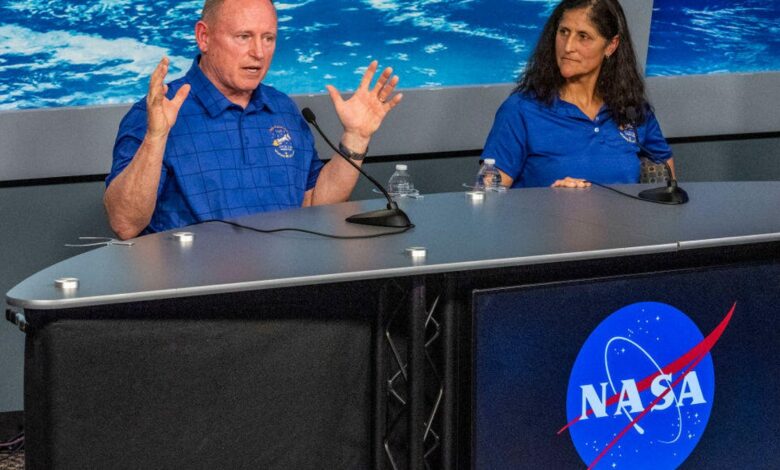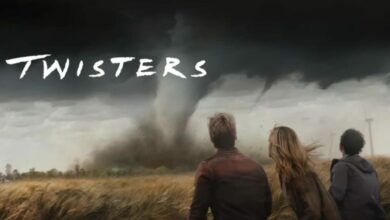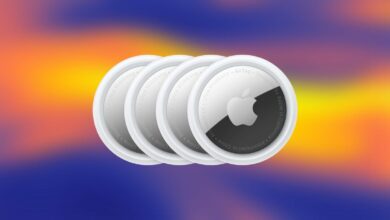Astronauts Stranded in Space: What You Need to Know and When They’ll Be Home

It sounds like the plot of a creepy sci-fi/horror movie: two astronauts stranded in space. But the situation surrounding Sunita Williams and Barry Wilmore, who are currently stuck on the International Space Station, isn’t quite as Hollywood-scary as that. Let’s break it down.
Who are the astronauts?
Both are experienced astronauts. Barry “Butch” Wilmore, 61, and Sunita “Suni” Williams, 58, are both Navy officers and former test pilots. Wilmore has been a NASA astronaut since 2000 and Williams since 1998. Both have extensive experience in space.
Williams is the former record holder for most spacewalks by a woman (seven) and most spacewalk time by a woman (50 hours, 40 minutes). In 2007, she ran the first marathon by a person in space.
In 2009, Wilmore piloted the space shuttle Atlantis on its mission to the ISS, and in 2014, she was part of the ISS crew that used a 3D printer to create a tool in space: a ratchet wrench. This was the first time humans had ever manufactured something off Earth.
What is their mission?
Wilmore, as commander, and Williams, as pilot, traveled to the ISS in a 15-foot-wide, Boeing-made capsule called Starliner. They launched on June 5 and docked with the ISS on June 6. NASA hopes that Starliner will provide the agency with a new way to get crews to and from the ISS, and the fact that it’s made by Boeing is another sign that NASA is beginning to lean on the private sector for its human spaceflight options. The New York Times reports.
Wilmore and Williams’ ISS mission was supposed to last just eight days, testing aspects of Starliner and seeing how it works with a human crew in space. But because of complications with Starliner, the two astronauts are still up there, with no set return date. They’ve been busy — working with the ISS Expedition 71 crew to conduct research and maintenance activities, NASA says.
Why is it taking me so long to get home?
The Starliner was delayed in May by a valve problem in the rocket, and engineers then had to repair a helium leak. It’s all bad news for Boeing, which is competing with SpaceX, which has been ferrying astronauts to the ISS since 2020 and has made more than 20 successful trips to the ISS.
Starliner finally launched, atop an Atlas V rocket, on June 6, but it was not without its problems. NASA announced that three helium leaks were identified, one of which was known before the flight, and two new ones. In addition to the leaks, the crew also had to troubleshoot faulty control thrusters, although the craft was able to dock successfully with the ISS.
SpaceX has had its share of failures, too. A Falcon 9 rocket exploded on the launch pad in 2016. And in July, a Falcon 9 rocket suffered a liquid oxygen leak and placed its satellites in the wrong orbit. The New York Times reportsBut that said, SpaceX has over 300 successful Falcon 9 flights to its credit.
Astronauts are safe
NASA reports that the astronauts are not in danger and are not completely trapped.
“There is no rush to get the crew home,” NASA said in a statement“This is a lesson learned from the Space Shuttle Columbia accident. Our NASA and Boeing teams are reviewing data from additional testing and analysis in space and on the ground, and are providing mission managers with data to make the best and safest decision about how and when to return the crew home.”
Options to get the astronauts home
In the event of an emergency, Starliner could still bring Wilmore and Williams home, NASA said. Or, if NASA chooses to send Starliner back without a crew, the two astronauts would remain at the ISS until late February 2025.
If that happens, NASA would have to juggle resources. The agency would send two crew members, not four, to the ISS on a SpaceX craft in late September, freeing up two extra spots on that ship, which would return in early 2025 with Wilmore, Williams and the two other crew members.
However, NASA cautions that no decision has yet been made on whether the two astronauts will return home on the Starliner or wait for SpaceX.
What do the astronauts say?
The astronauts don’t seem to panic.
“We are having a great time here on the ISS,” Williams said at a press conference held from space in July. “I’m not complaining. Butch’s not complaining that we’re here a couple extra weeks.”
And despite the Starliner’s problems, Wilmore seems positive about the aircraft.
“The spacecraft performed incredibly well,” he said, though he noted that the thrust issues from the second day were evident. “You could see the thrust control, the power was reduced,” he said.




